Red usually means love and passion, but not when it comes to cacti that are naturally green in color. If you have cactus plants turning unusually red, then you need to understand that there are various factors at play.
For instance, these include sunlight issues, watering mistakes, fertilizing fails, environmental factors, and overall plant care mishaps. Let’s not waste any more time so we can get your cactus back to being green and gorgeous!
10 Reasons Why Cactus Plants Turn Red
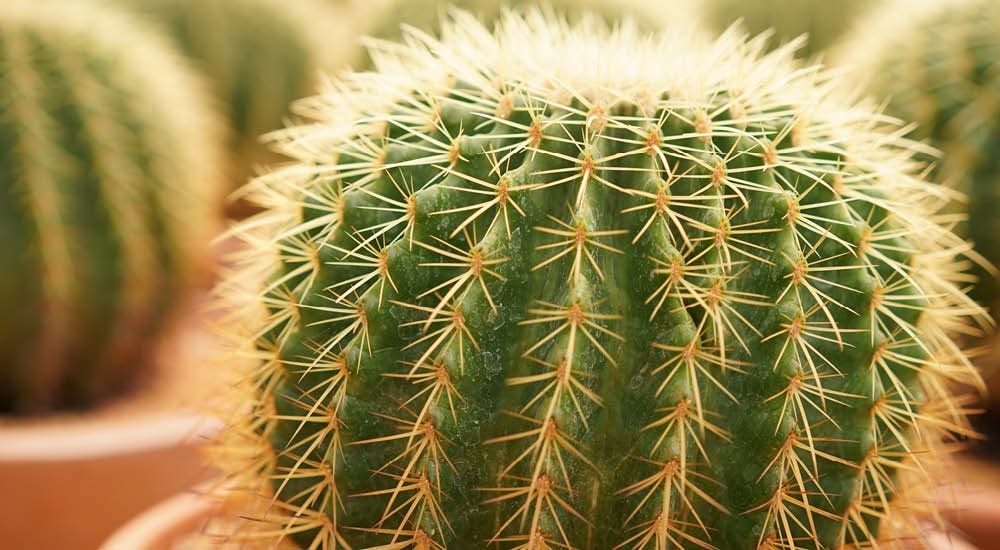
Factors such as excessive sunlight, underwatering, temperature stress, mineral imbalance, and not enough sun can cause red-skinned cacti. Plus, magnesium deficiency, root infections, diseases, pests, and overcrowded roots contribute.
Let’s check each factor one by one and its corresponding solution!
1. Excessive Sunlight
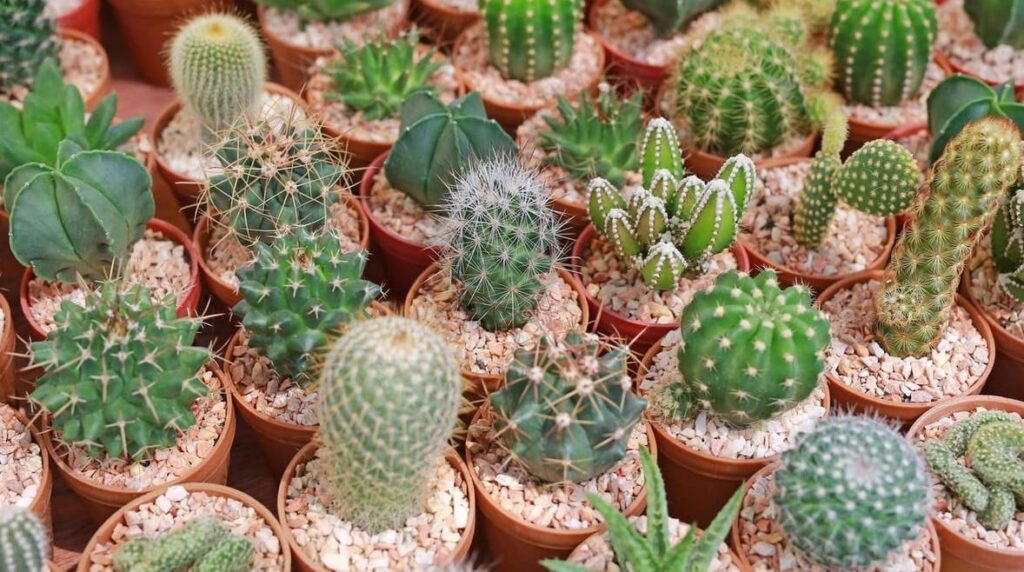
How to Fix: Provide appropriate sunlight exposure.
Although cacti are known to love the sunlight, too much can be a bad thing. Excessive sunlight exposure can cause their skin to develop a reddish hue, similar to humans who experience sunburns.
The intensity of the sunlight causes cellular stress in the plant. The stress in turn causes the plant to develop protective measures in terms of chemical pigments called anthocyanin that cause the change in color.
| Factor | Information |
| Ease of Activity | Moderate ●●○○○ |
| Speed | Gradual improvement with controlled sunlight |
| Materials Needed | Shade cloth, adjustable shading, gradual sunlight exposure |
Solution: Provide appropriate sunlight exposure.
It all begins with gradual sun exposure in a filtered spot and incremental exposure over time. Pretty soon, your cactus will slowly acclimate to the provided sunlight exposure.
First, you need to introduce your cactus to direct sunlight slowly. Provide some shade initially to help it acclimate.
Move the cactus to a location with filtered sunlight to reduce the intensity of direct exposure. Over the course of a few days, gradually increase the cactus’s exposure to direct sunlight and then monitor its response to ensure it adjusts positively.
2. Underwatering

How to Fix: Provide appropriate moisture to the soil.
Lack of water causes the cactus to turn reddish due to plant stress. When there’s not enough water, the cactus produces anthocyanin – the protective pigment mentioned earlier.
This chemical compound occurs when plants are stressed and are usually exposed to the sun as well. This pigment also naturally occurs in flowers, fruits, and tubers even without stress.
Solution: Provide appropriate moisture to the soil.
| Factor | Information |
| Ease of Activity | Moderate ●●○○○ |
| Speed | Gradual improvement with adjusted watering |
| Materials Needed | Well-draining soil, watering can with a narrow spout |
When it comes to watering cacti, moderation is always important. Water your cactus deeply but not often, imitating its natural water cycle.
Let the soil dry completely between waterings to avoid constant moisture. Adjust the watering schedule based on your cactus species for specific needs.
Water the substrate or the soil while avoiding water contact with the plant itself. Some homeowners prefer bottom watering, which is letting plant pots soak in water for bottom-up soil absorption, like a sponge.
3. Temperature Stress
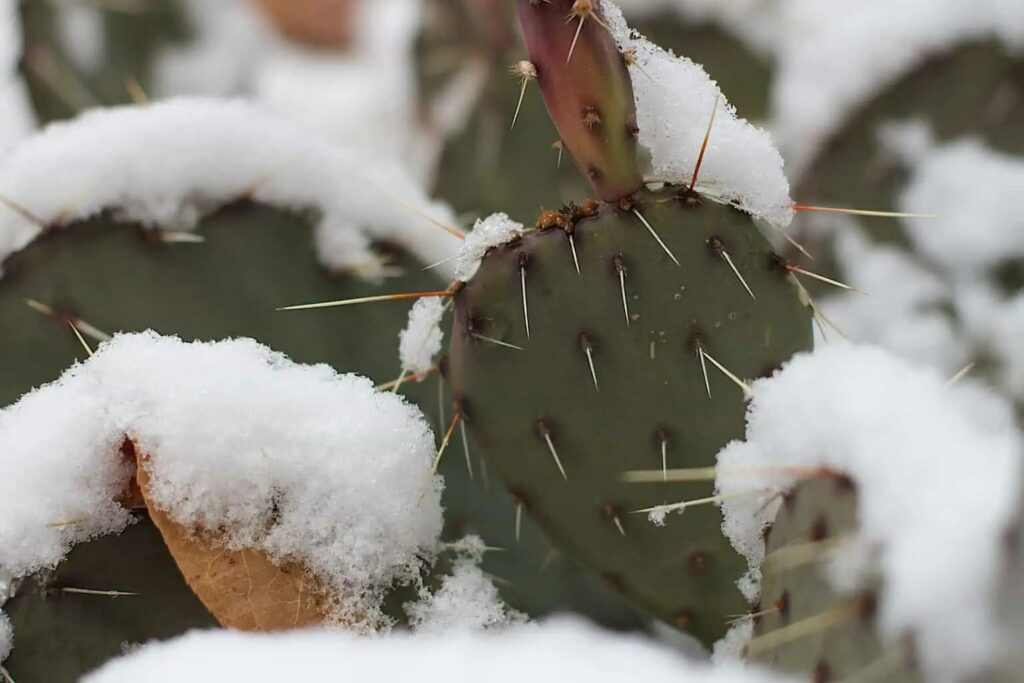
How to Fix: Protect your cactus from sudden temperature changes.
Cacti are pretty hardy when it comes to growth issues, but they can easily experience stress when faced with extreme temperatures such as sudden cold snaps. This plant stress can cause cacti to produce red dues on its skin.
The good thing is that cacti quickly show their stress visually, especially when it comes to temperature-related issues. Think of it as the opposite of sunburn – since it’s caused by sudden cold temperatures.
Solution: Protect your cactus from sudden temperature changes.
| Factor | Information |
| Ease of Activity | Moderate ●●○○○ |
| Speed | Gradual improvement with temperature management |
| Materials Needed | Protective cover, indoor space for colder nights |
Now, protecting your cactus from cold snaps takes a bit of preparation. Check your cactus’s temperature regularly, especially for sudden drops.
Bring it inside on colder nights, especially when you’ve been monitoring the temperatures using local weather systems and news. It helps to use a cover for outdoor cacti in extreme weather.
If the cactus has been inside for quite some time, reintroduce it outdoors slowly. Slowly acclimatizing it every few weeks is a good idea so that it adjusts well to its new environment.
4. Mineral Imbalance in Soil
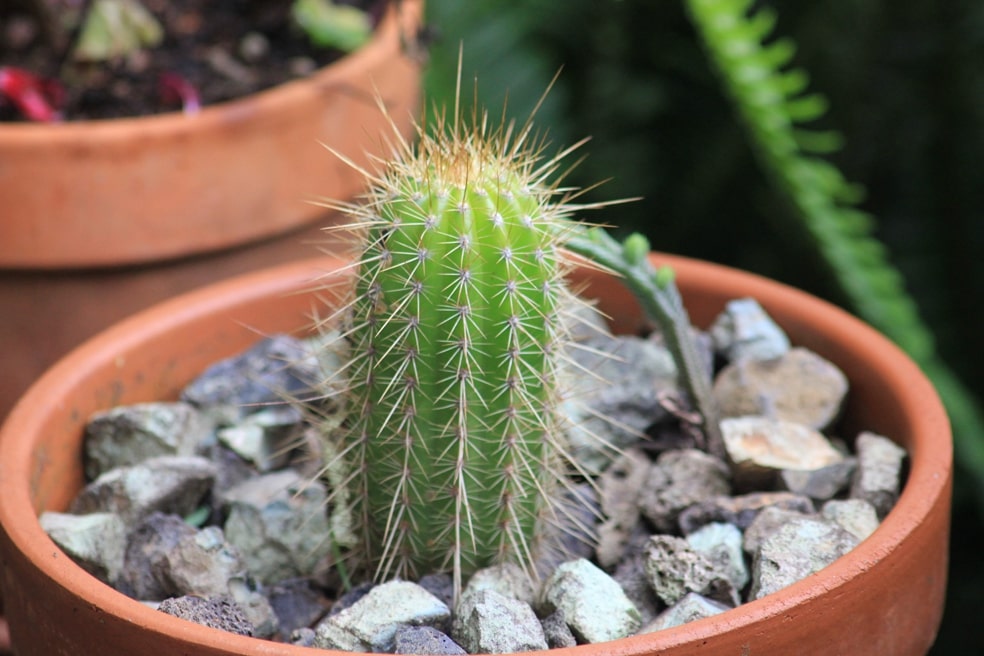
How to Fix: Conduct a soil test and add amendments to adjust soil composition.
Soil imbalances affect a lot of plants, including cacti. The imbalance could be as glaring as the 3 key compounds of nitrogen, phosphorus, and potassium or as subtle as the lack of certain salts and minerals.
The presence of excessive salts or minerals can create a hostile environment for the sensitive nature of cacti. These elements interfere with their ability to absorb essential nutrients, leading to visible signs of stress like the reddish tint.
Solution: Conduct a soil test and add amendments to adjust soil composition.
| Factor | Information |
| Ease of Activity | Moderate ●●○○○ |
| Speed | Gradual improvement with soil adjustments |
| Materials Needed | Soil testing kit, mineral amendments, well-balanced cactus mix |
A soil test is the best solution for checking for imbalances in the soil. You can find soil testing kits from gardening centers as well as in online stores, although nothing’s more accurate than ones offered by local environmental laboratories and clinics.
Once you have your soil test results, you’ll be able to determine the missing minerals, so add them or at least use a balanced cactus mix as your soil. Regularly flush soil to remove excess salts, keeping a healthy environment for your cactus.
5. Not Enough Sun
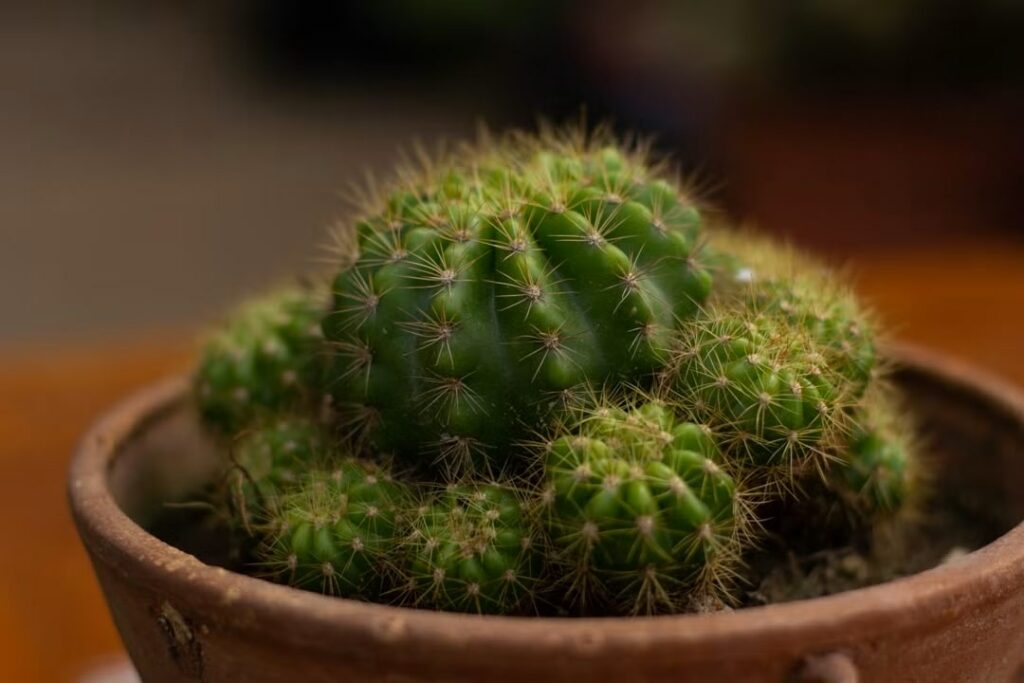
How to Fix: Provide appropriate sunlight exposure.
While overexposure can cause cacti to turn red, the exact opposite also causes the same effect – not getting enough sun. When a cactus doesn’t receive an adequate amount of light, it may display a reddish hue as a stress response.
Cacti rely on sunlight for photosynthesis, and when deprived of sufficient light, the plant initiates stress responses, including the development of a reddish color on the skin. If you’ve placed your cactus in a spot with low sunlight exposure, this could be the reason.
Solution: Provide appropriate sunlight exposure
| Factor | Information |
| Ease of Activity | Moderate ●●○○○ |
| Speed | Gradual improvement with increased sunlight exposure |
| Materials Needed | Suitable location with direct sunlight |
Remember that the cactus grows best in bright light, so place the cactus where it gets 6 hours of direct sunlight daily. Monitor and rotate the plant often for even exposure as well as to make sure it grows straight and upright and not leaning to one side.
If sunlight is scarce, use plant-friendly artificial light to encourage the right amount of photosynthesis for that healthy green look. Make sure all sides are exposed to the grow light to keep the cactus growing healthy.
6. Not Enough Magnesium
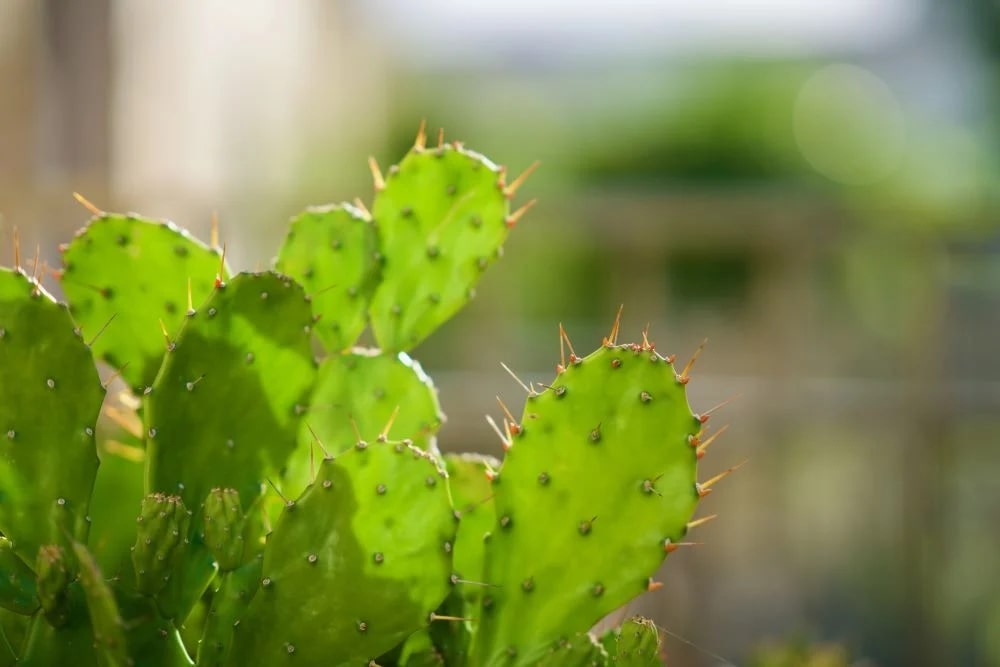
How to Fix: Provide magnesium-based fertilizers or amendments.
Assuming that you’ve done your soil test and it came up with magnesium deficiency, you’ll have to be more thorough in solving this issue. Magnesium is central to chlorophyll production for photosynthesis.
Magnesium helps in phosphorus transportation and regulates nitrogen and sulfur absorption. Magnesium also affects cell expansion and structure, strengthening cactus integrity and making it indispensable for cacti’s well-being.
Solution: Provide magnesium-based fertilizers or amendments.
| Factor | Information |
| Ease of Activity | Moderate ●●○○○ |
| Speed | Gradual improvement with magnesium supplementation |
| Materials Needed | Magnesium-based fertilizers, specific magnesium supplements |
If the issue is mineral-specific, then you’ll need to look for fertilizers or amendments that have higher magnesium content that are designed to correct the deficiency. This means you’ll have to look for and use targeted magnesium supplements as per instructions.
Remember to apply only as directed, ensuring even distribution near the roots and following the recommended frequency. It’s best to moisten the soil lightly to encourage the roots to take in the fertilizer in a more efficient way.
7. Root Infections
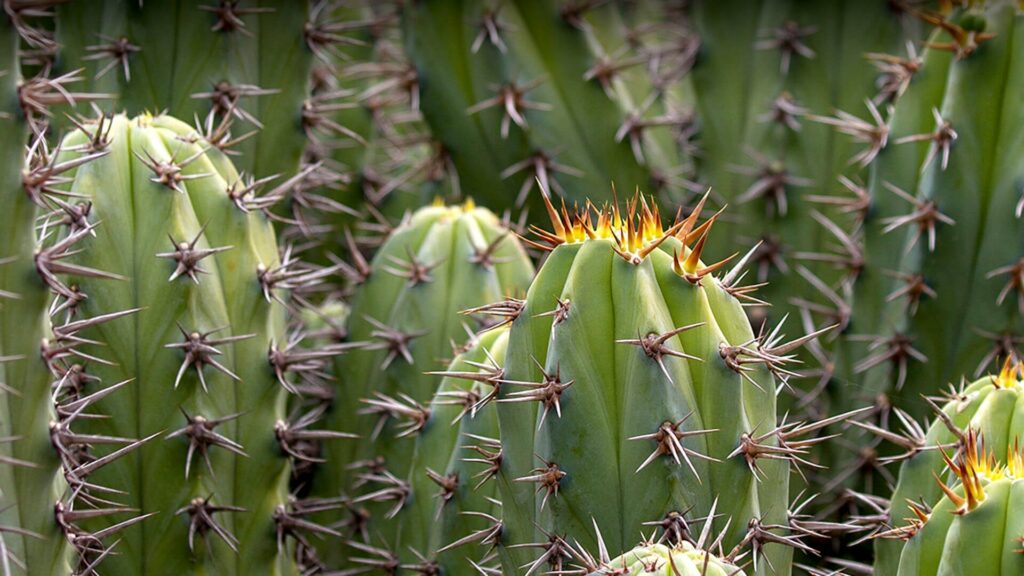
How to Fix: Inspect for and trim root infections before repotting in clean soil.
Root infections can be caused by fungi or bacteria, which can easily harm the cactus by damaging it or even killing it when left untreated. These infections can easily impede and prevent the plant from taking in essential nutrients and water.
When parched and deprived of water and nutrients, cacti quickly get stressed and turn red. On top of that, the roots can begin to rot and the plant can begin to wilt.
Solution: Inspect for and trim root infections before repotting in clean soil.
| Factor | Information |
| Ease of Activity | Moderate ●●○○○ |
| Speed | Gradual recovery with proper care |
| Materials Needed | Sterile cutting tools, fungicide (if necessary), fresh well-draining soil |
If you suspect root infections are the causes, check cactus roots for issues like root rot or root discoloration aside from the reddish hue of the plant. Trim the affected root parts with clean and sterilized tools to stop the spread of the infection.
For repotting, take the cactus out, shake off excess soil, trim damaged roots, and move it to fresh, well-draining soil. This helps ensure that the fungi or bacteria won’t follow your cactus to its new home.
After repotting, wait a few days before watering. Consider using fungicide if needed and follow instructions to ensure safety and protection for you and for your plant.
Watch the cactus closely after repotting. Ensure enough light, but not direct intense sunlight and water when the soil is dry to prevent infections.
8. Diseases
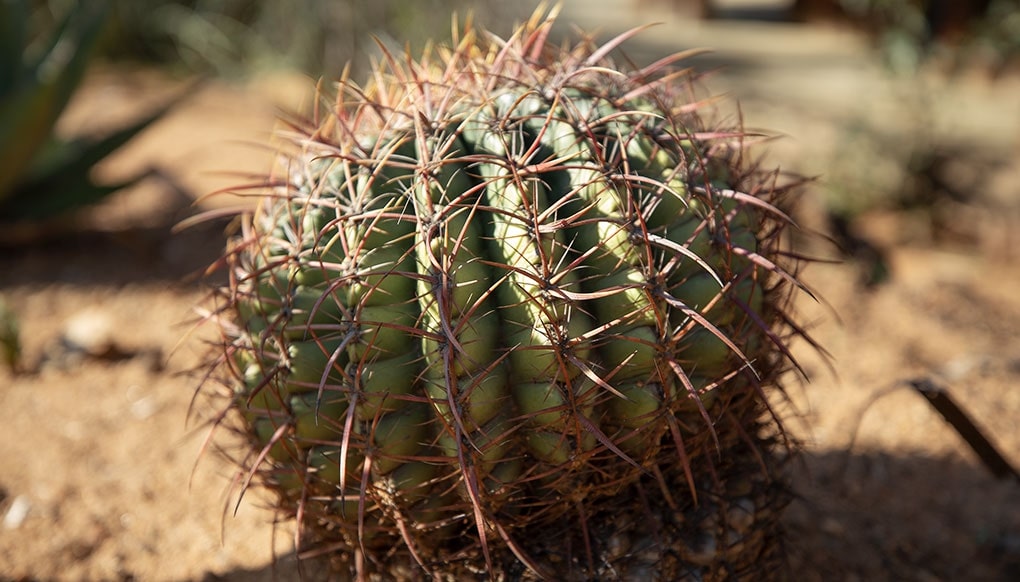
How to Fix: Identify the specific disease and treat it accordingly.
While they can be prickly and look tough, cacti are susceptible to various diseases that cause red spots or even cause the whole plant to turn red. These are visible indicators that the plant is undergoing stress and other possible underlying issues.
For example, fungi can attack cacti, leading to red spots and discoloration. The infection can spread quickly when not addressed promptly.
On top of that, certain bacteria can cause redness in cacti, impacting the plant’s overall health and appearance.
Solution: Identify the specific disease and treat it accordingly.
| Factor | Information |
| Ease of Activity | Moderate ●●○○○ |
| Speed | Treatment duration varies |
| Materials Needed | Fungicides, bactericides, pruning tools |
When dealing with cacti diseases, it’s best to first research, consult, and diagnose before thinking about treatments. This will help you make the whole approach easier.
Once you have identified the cause, treat with specific remedies based on diagnosis, like fungicides for fungi or bactericides for bacteria. Prune infected parts to prevent spread, isolate as needed, and follow up with careful monitoring for optimal recovery.
9. Pest Infestation
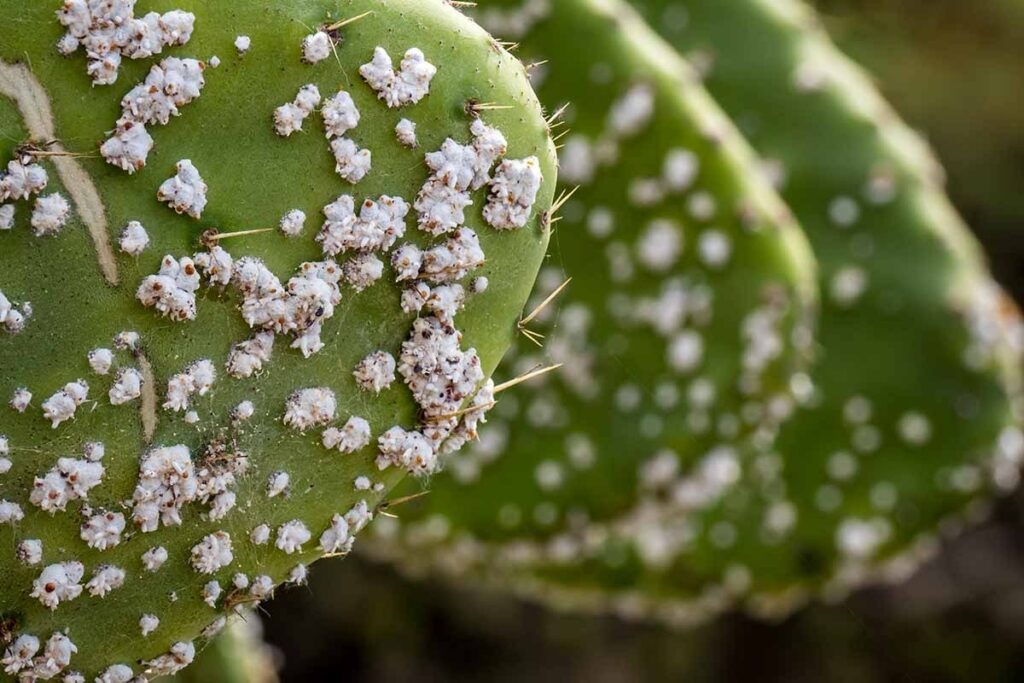
How to Fix: Inspect cactus for pests, identify them, and then treat them appropriately.
Cacti are vulnerable to infestations by various pests, including spider mites or scale insects. When these pests invade, they induce stress in the cactus, often manifesting as a reddish coloration.
Spider mites are microscopic arachnids that thrive in warm and dry conditions, making them particularly problematic for cacti. Scale insects, on the other hand, attach themselves to the cactus, feeding on its sap.
Solution: Inspect cactus for pests, identify them, and then treat them appropriately.
| Factor | Information |
| Ease of Activity | Moderate ●●○○○ |
| Speed | Gradual improvement with consistent treatment |
| Materials Needed | Insecticidal soap, neem oil, isolation measures |
Now if you suspect pests are the reason for your reddish cactus, check it often for these troublesome insects. Watch out for any webbing, crawling insects, or odd discoloration, especially on the nooks and crannies of your cactus.
Once you’ve identified the pests, use specific treatments like insecticidal soap or neem oil as instructed. Isolate affected cacti to stop pest spread, controlling and eliminating current and future infestations.
10. Overcrowded Roots
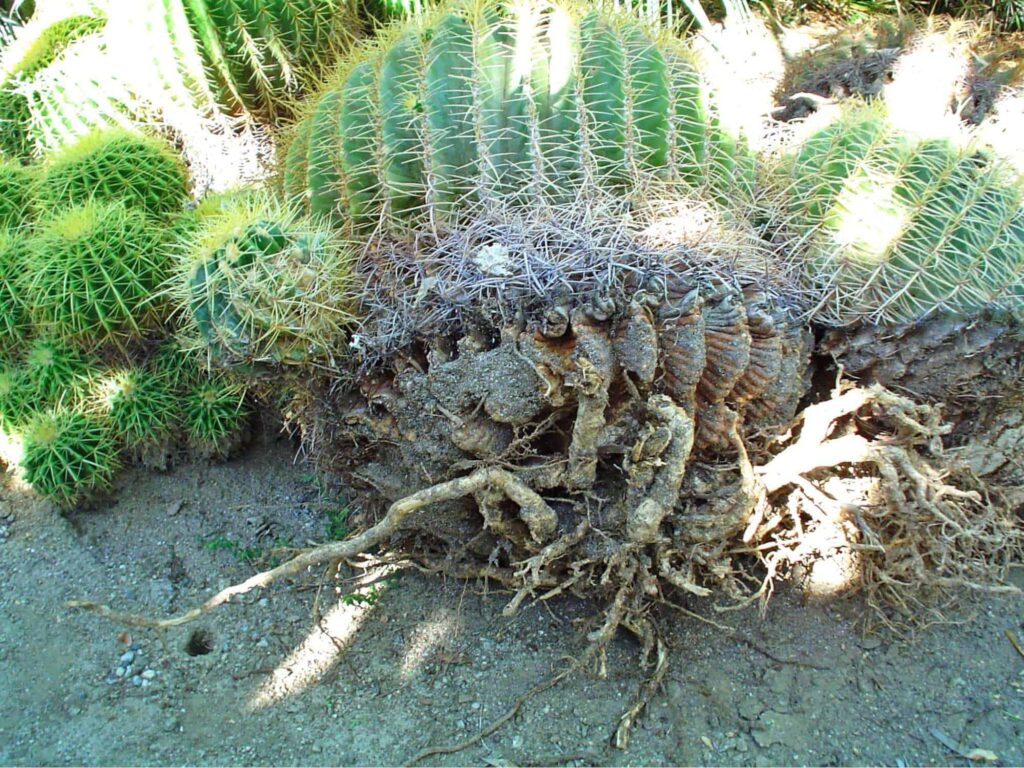
How to Fix: How to Fix: Repot cacti into bigger pots.
Large cacti may have relatively smaller roots, but they can also become overcrowded. This leads to the root system having issues with absorbing nutrients and water, causing the plant to stress out and redden in appearance.
When confined to a small pot for too long, the roots intertwine and become densely packed. This overcrowding not only limits the availability of essential nutrients but also restricts the cactus’s ability to expand its root system.
Solution: Repot cacti into bigger pots.
| Factor | Information |
| Ease of Activity | Moderate ●●○○○ |
| Speed | Gradual improvement with repotting |
| Materials Needed | Larger pot, fresh well-draining soil, pruning shears |
If an overcrowded root system is the cause for your reddish cactus, then you’ll need to repot it. To do this, you’ll need to take out the cactus from its pot carefully so as to avoid any damage to the roots.
Check the roots for overcrowding as tightly packed roots signal the need for action. Use a larger container with well-draining soil, allowing space for root growth.
While repotting, carefully cut any dead roots for healthier development. Make sure you’re using well-draining soil or cactus-specific potting mix to make sure that the roots have enough space to grow.




